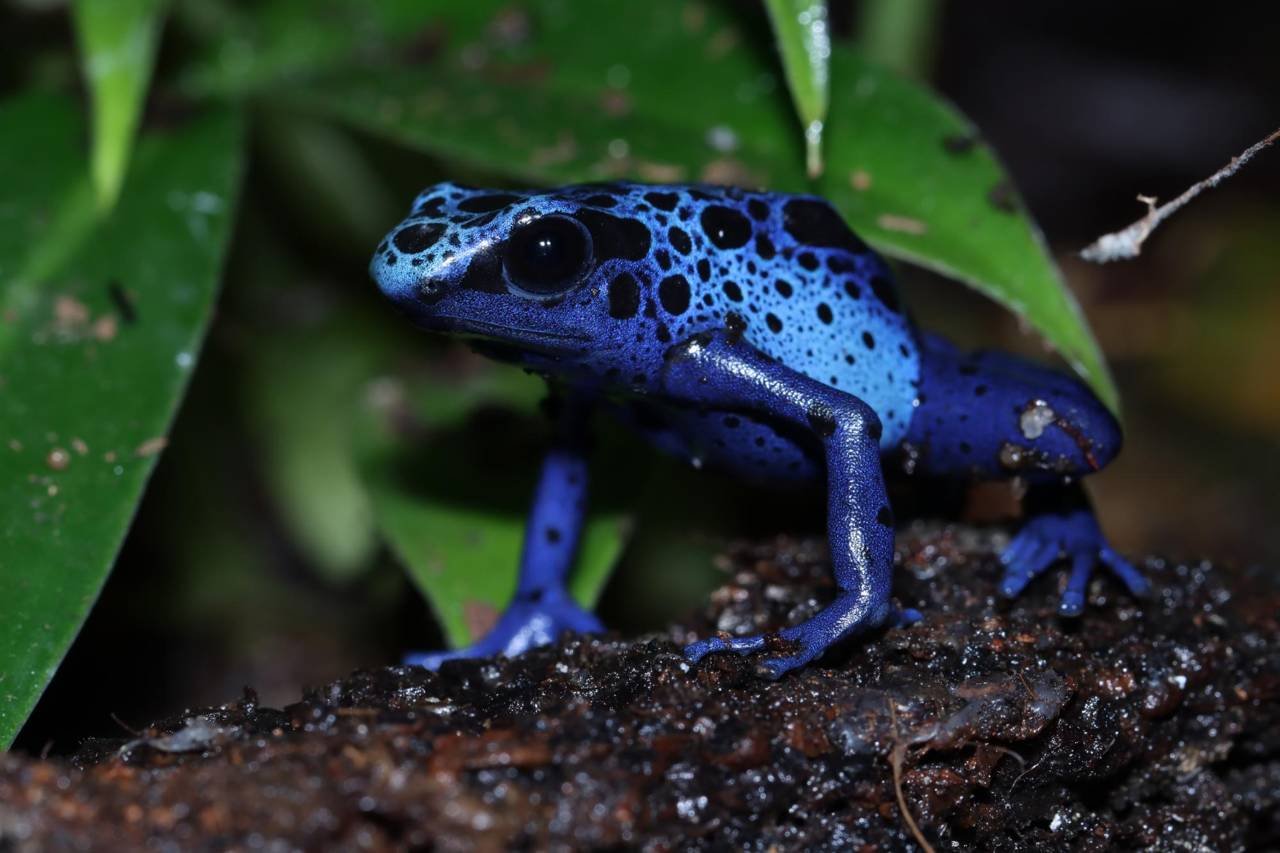Dendrobatidae, commonly known as poison dart frogs, are one of the most intriguing and vividly colored groups of amphibians found primarily in the tropical rainforests of Central and South America. Known for their striking colors and potent toxins, these frogs have captivated scientists and nature enthusiasts alike. Let’s dive into the fascinating world of Dendrobatidae frogs.
The Poison Dart Frogs Characteristics and Appearance
Poison dart frogs are renowned for their vibrant colors, including hues of red, blue, green, orange, and yellow. These brilliant colors are not just for show; they serve a critical role in warning predators of their toxic nature. This phenomenon, known as aposematism, helps deter potential threats.
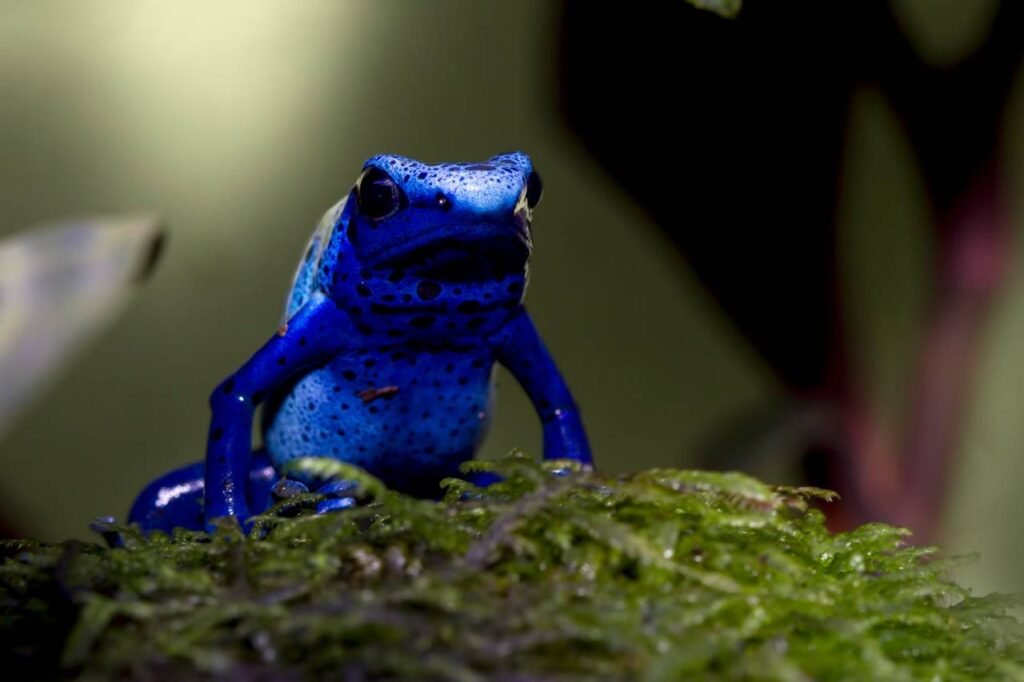
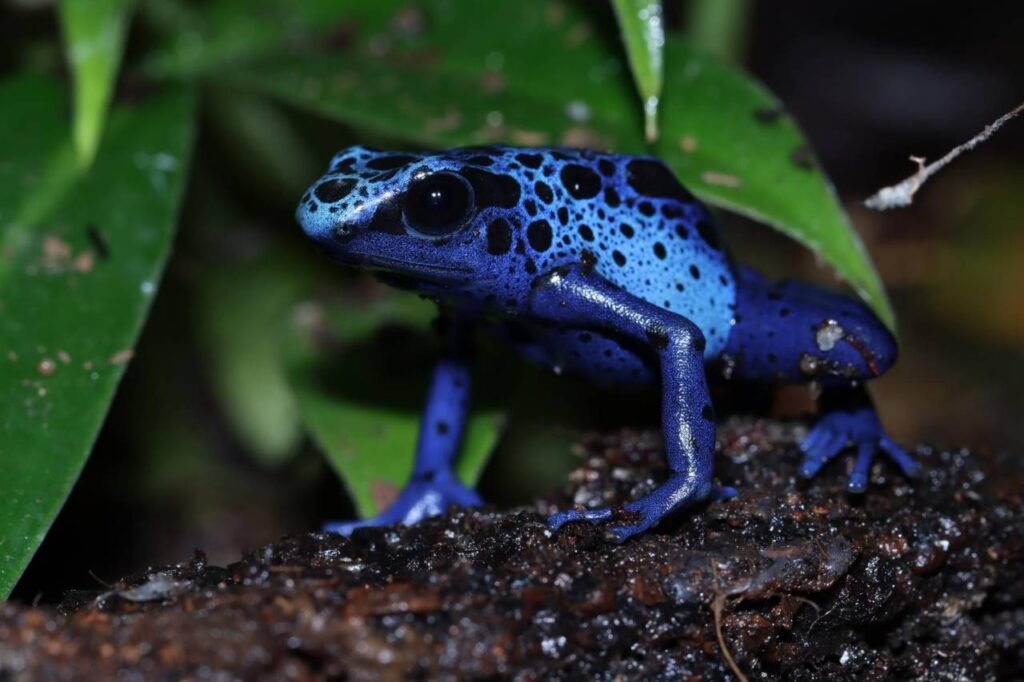
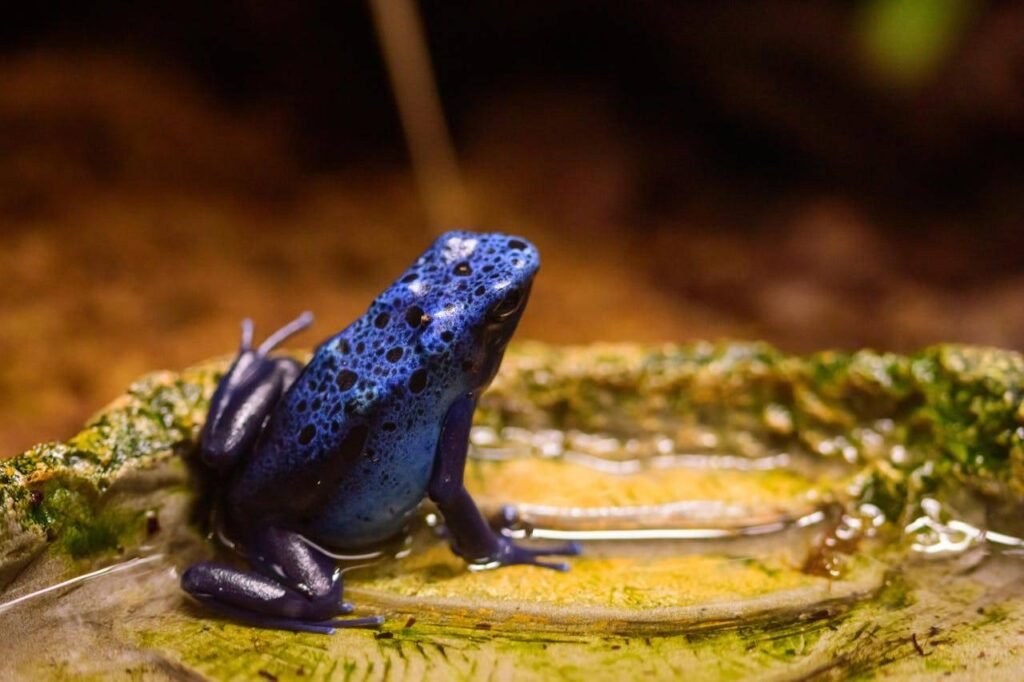
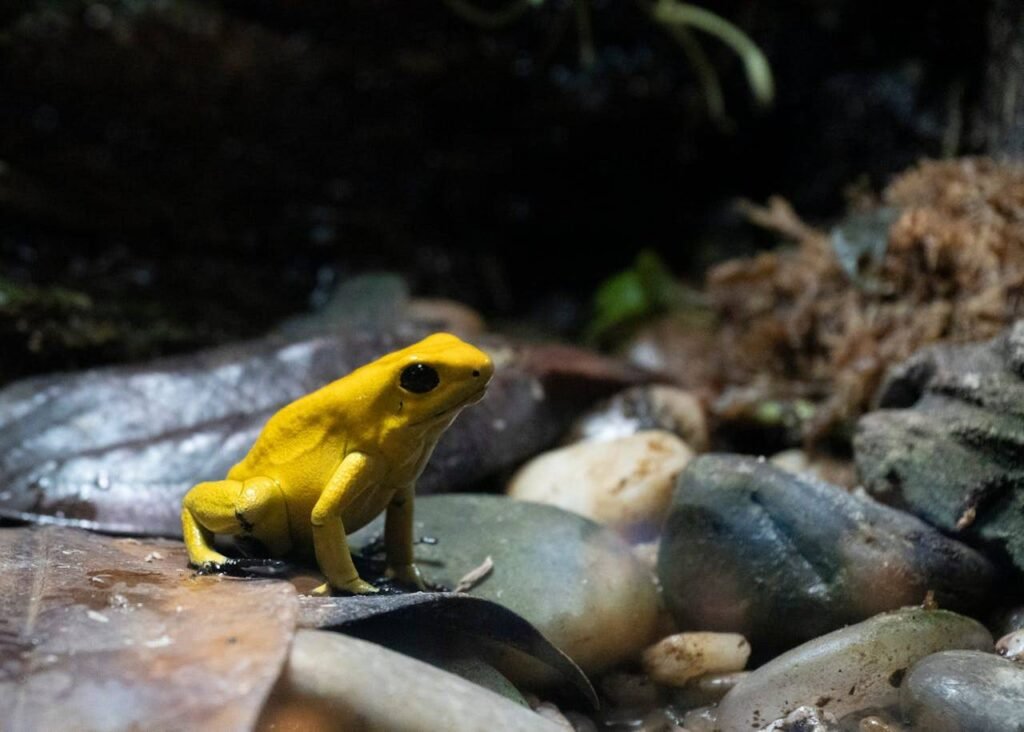
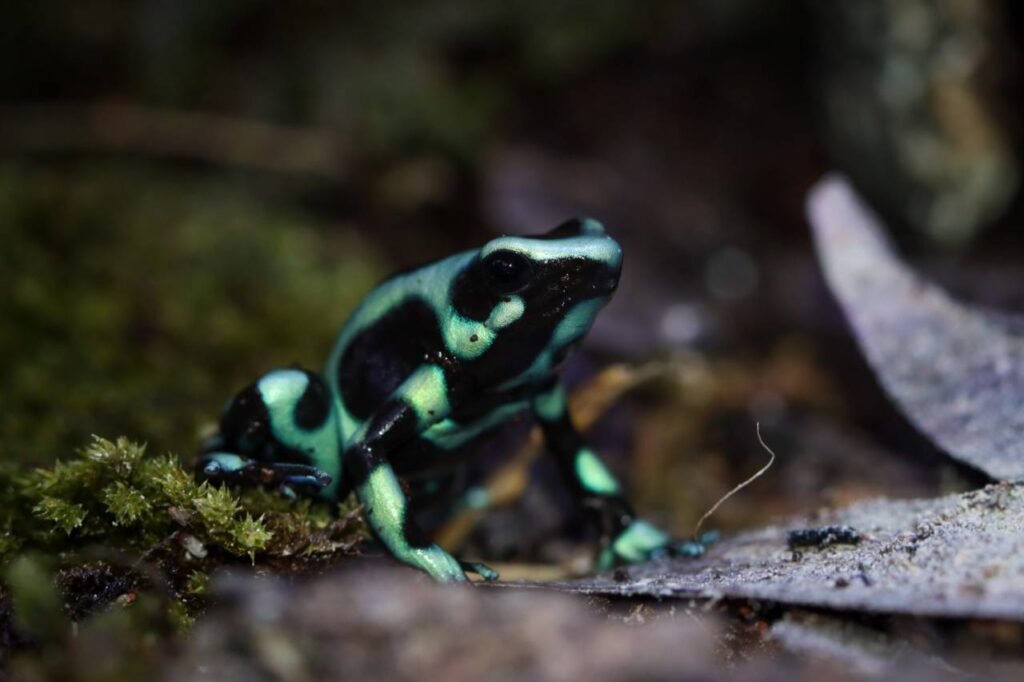
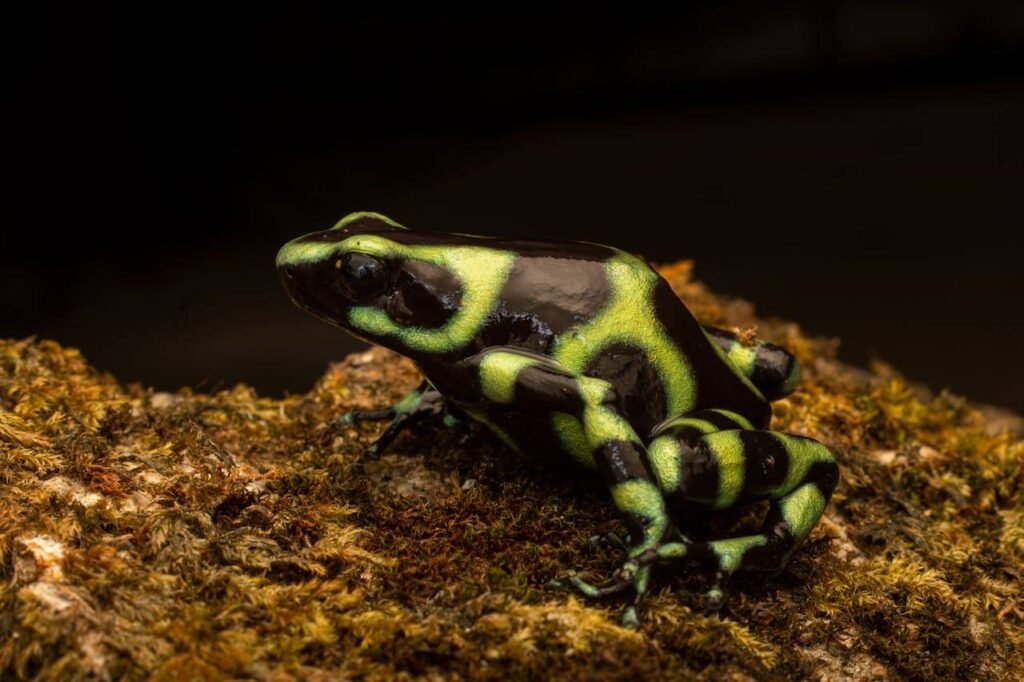
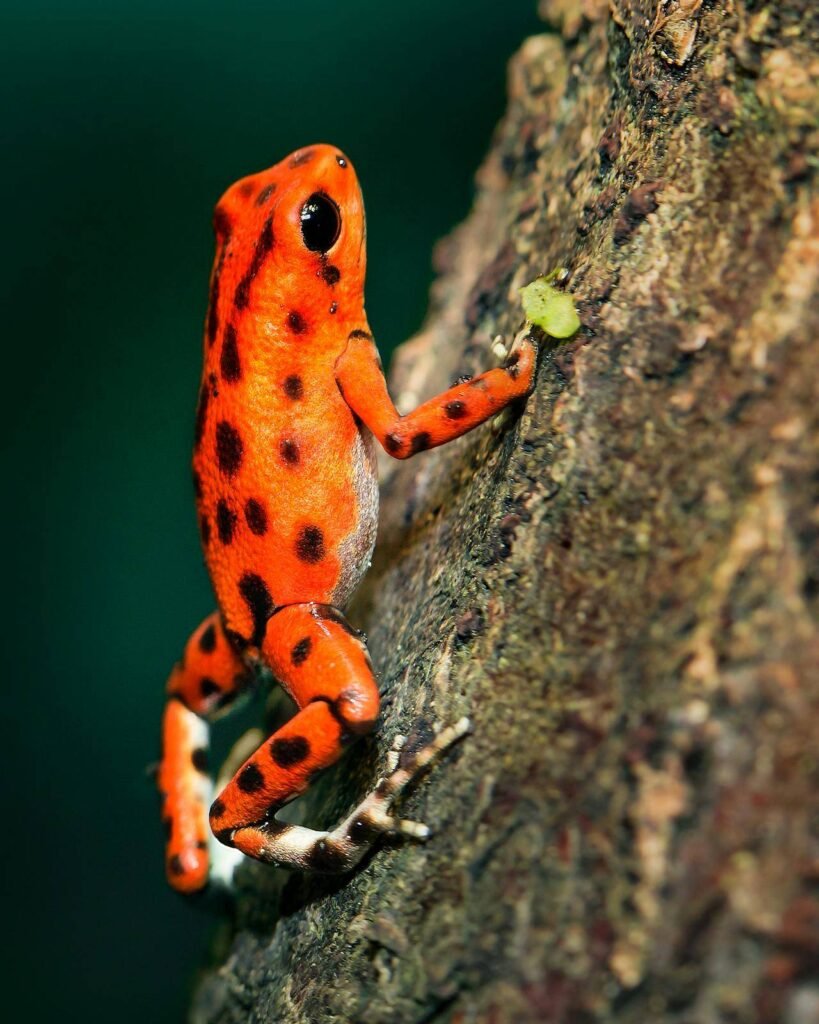

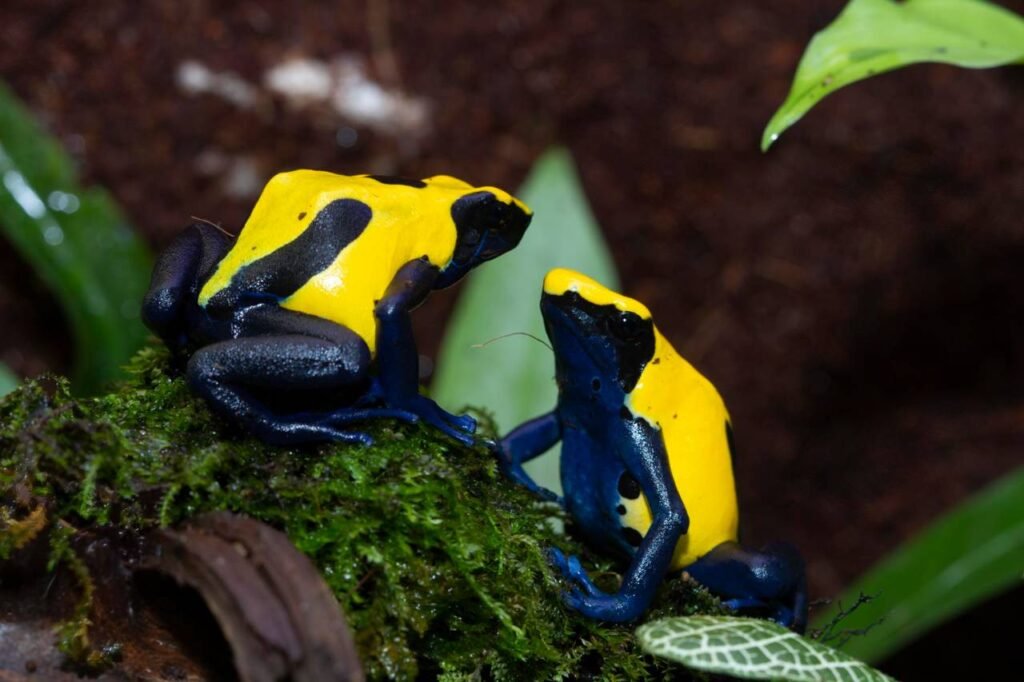
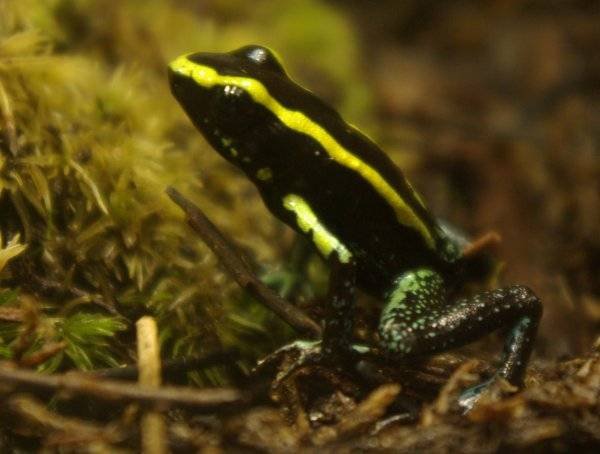
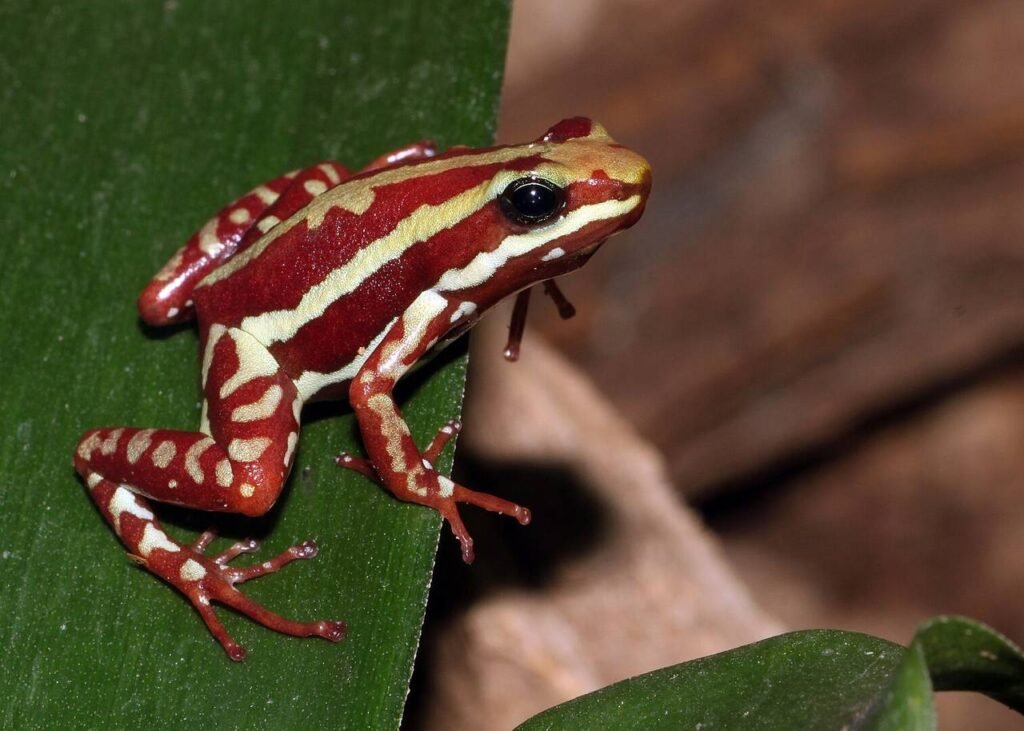
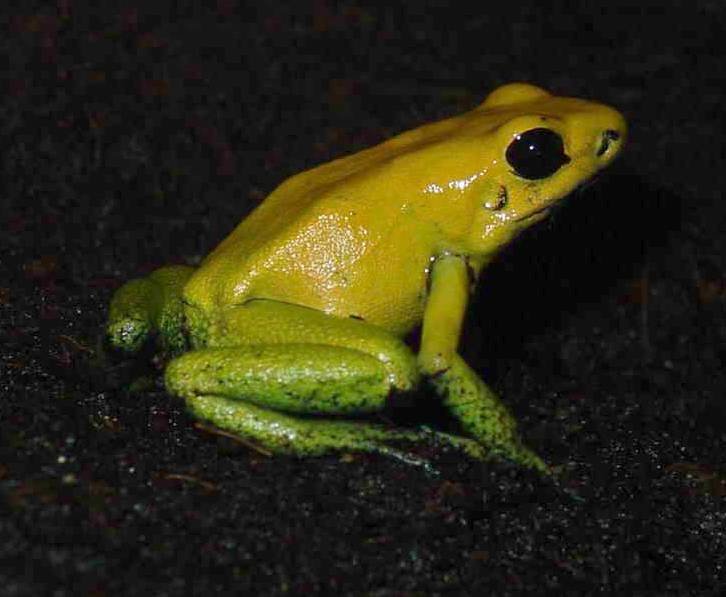
Here is a list of some well-known toxic or poisonous dart frog species along with their scientific names. It’s important to note that while not exhaustive, this list includes several prominent species known for their toxicity:
- Golden Poison Frog – Phyllobates terribilis
- Strawberry Poison-Dart Frog – Oophaga pumilio
- Blue Poison Dart Frog – Dendrobates tinctorius “azureus”
- Green and Black Poison Dart Frog – Dendrobates auratus
- Yellow-banded Poison Dart Frog – Dendrobates leucomelas
- Black-legged Poison Frog – Phyllobates bicolor
- Kokoe Poison Frog – Phyllobates aurotaenia
- Phantasmal Poison Frog – Epipedobates tricolor
- Dyeing Poison Dart Frog – Dendrobates tinctorius
The family Dendrobatidae includes over 100 species, many of which possess varying levels of toxicity. While the list I shared highlights some of the most common and well-studied species, there are indeed more toxic species within this family and other frogs in different families that have toxic properties to a lesser degree.
Habitat and Distribution
Dendrobatidae frogs are indigenous to the humid tropical rainforests of countries like Colombia, Brazil, and Peru. They typically thrive in moist environments near streams and ponds, where they can find ample food and shelter. These frogs are mostly diurnal, which means they are active during the day, allowing them to display their striking colors in full sunlight.
Toxicity and Defense Mechanisms
The toxicity of poison dart frogs is a well-documented defense mechanism. They possess alkaloid toxins in their skin, which can be potent enough to deter or even kill predators. Interestingly, these toxins are derived from their diet in the wild, which includes ants, termites, and other small insects. Frogs raised in captivity on a controlled diet typically lack these toxins.
Reproduction and Life Cycle
Poison dart frogs are known for their unique reproductive strategies. Females usually lay their eggs in moist environments, such as leaf litter or water-filled bromeliads. Once the eggs hatch into tadpoles, the male often transports them to water bodies, like small ponds or tree holes, where they continue to develop. Baby poison dart frogs, or newly hatched tadpoles, generally are not toxic. The frogs develop their potent toxins over time, primarily through their diet after metamorphosis into adults. The specific age when toxicity develops can vary based on the species and availability of alkaloid-rich diet.
Conservation Status
Despite their remarkable adaptations, many species of Dendrobatidae frogs are threatened by habitat loss, pollution, and climate change. Conservation efforts are critical to protect these frogs and their natural habitats. Protected areas and captive breeding programs are essential strategies for ensuring their survival.
Cultural Significance
Indigenous tribes in Central and South America have historically used the toxins of certain poison dart frogs for hunting, applying the toxins to the tips of blow darts. This cultural practice is where they derive their common name, “poison dart frog.”
Conclusion
Dendrobatidae frogs, with their vibrant colors and fascinating defenses, are among the most captivating creatures in the animal kingdom. Their unique adaptations and ecological roles highlight the complex interconnections within tropical ecosystems. Understanding and preserving these incredible amphibians is vital for maintaining biodiversity and the health of their rainforest habitats.
FAQs
What makes poison dart frogs so colorful?
Dendrobatidae frogs are known for their vibrant colors, which include shades of red, blue, green, orange, and yellow. These bright colors serve as a warning to predators about the toxins present in their skin, a phenomenon known as aposematism.
Where do Dendrobatidae frogs live?
These frogs are native to the tropical rainforests of Central and South America. They thrive in moist environments near streams and ponds, where they find food and shelter.
Are all poison dart frogs equally toxic?
No, the level of toxicity varies among different species of poison dart frogs. Some species produce toxins potent enough to deter or even kill predators, while others have milder toxins. Frogs raised in captivity typically do not have the same level of toxicity due to differences in diet.
How do poison dart frogs get their toxins?
The toxins found in Dendrobatidae frogs are primarily obtained from their diet, which includes ants, termites, and other small insects. These creatures contain alkaloids that the frogs incorporate into their skin.
What do Dendrobatidae frogs eat?
Their diet mainly consists of small insects such as ants, termites, and mites. They have a specialized diet that contributes to their ability to produce toxic alkaloids.
How do poison dart frogs reproduce?
Females lay their eggs in moist environments, often in leaf litter or water-filled bromeliads. After hatching, the male usually transports the tadpoles to larger bodies of water, like ponds or tree holes, where they continue to develop.
Why are Dendrobatidae frogs important to the ecosystem?
These frogs play a crucial role in controlling insect populations in their habitat. Additionally, they serve as prey for some predators and are indicators of environmental health, reflecting the ecosystem’s overall condition.
Are poison dart frogs endangered?
Many species of Dendrobatidae frogs are threatened by habitat loss, climate change, and pollution. Conservation efforts, including protected areas and captive breeding programs, are vital for their survival.
Which is the most toxic poison dart frog?
The most toxic poison dart frog is the Golden Poison Frog (Phyllobates terribilis), native to Colombia. Its skin contains enough toxins to potentially harm or even kill large predators and humans.
How long do poison dart frogs live?
Dendrobatidae frogs typically live between 4 to 15 years in captivity, depending on the species and care. In the wild, their lifespan may be shorter due to environmental factors and predation.
Are there animals that can eat poison dart frogs?
Yes, some predators have developed resistance to the toxins of certain poison dart frogs. The fire-bellied snake (Liophis epinephelus) is known to consume these frogs without being affected by their toxins.
Is the feces of poison dart frogs toxic?
The feces of Dendrobatidae frogs is not typically considered toxic. The toxins are primarily found in the skin, used as a defense mechanism against predators. However, it is always advisable to handle all wildlife with care and hygiene.
Are there other animals with similar toxins?
Yes, certain other species possess similar alkaloid toxins. For example, some small bird species, such as the Hooded Pitohui from New Guinea, also have toxins in their skin and feathers, which they likely acquire from their diet, similar to poison dart frogs.
Are baby poison dart frogs toxic, or at what age do they become toxic?
Baby Dendrobatidae frogs, or newly hatched tadpoles, generally are not toxic. The frogs develop their potent toxins over time, primarily through their diet after metamorphosis into adults. The specific age when toxicity develops can vary based on the species and availability of alkaloid-rich diet.
Is there a difference in toxicity between male and female poison dart frogs?
Generally, there is no significant difference in toxicity between male and female poison dart frogs. Both sexes produce toxins as a defense mechanism, although the exact toxin levels may vary slightly depending on individual diet and environmental factors.
Is there a visual difference between male and female poison dart frogs?
In many Dendrobatidae frogs species, males and females look quite similar, and distinguishing between them can be challenging without close observation. However, some species exhibit subtle sexual dimorphism. For example, males might be slightly smaller than females or possess distinctive characteristics such as vocal sacs used during mating calls. These differences can vary among species and are often not as pronounced as in other animal groups.
Do poisonous frogs exist in captivity?
Yes, poisonous dart frogs are commonly kept in captivity, especially in zoos, research labs, and by some private hobbyists. Their vibrant colors and interesting behaviors make them popular in educational and conservation settings.
What are poison dart frogs fed in captivity?
In captivity, poison dart frogs are typically fed a diet of small invertebrates, such as fruit flies, pinhead crickets, and springtails. These are manageable and readily available food sources that meet the nutritional needs of the frogs.
Can a poison dart frog lose its toxicity in captivity?
Yes, Dendrobatidae frogs can lose their toxicity over time when kept in captivity. This is because their toxins are primarily derived from consuming specific alkaloid-rich insects in the wild, such as certain ants and beetles. In captivity, where these specific insects are not part of their diet, the frogs’ bodies no longer produce the same level of toxins, making them less toxic or even non-toxic. However, the potential for initiated toxicity depends on the species and how long they have been under these dietary conditions. The color of Dendrobatidae frogs does not typically change when they are kept in captivity and lose their toxicity due to diet. Their vibrant colors, which serve as a warning signal to potential predators about their toxicity, are primarily due to genetic factors and are not directly linked to their diet or toxin levels. These colors remain vivid even if they are no longer toxic because the coloration is a fixed physical trait.

